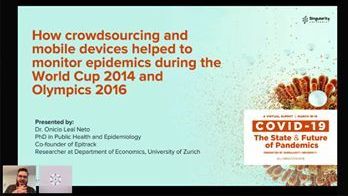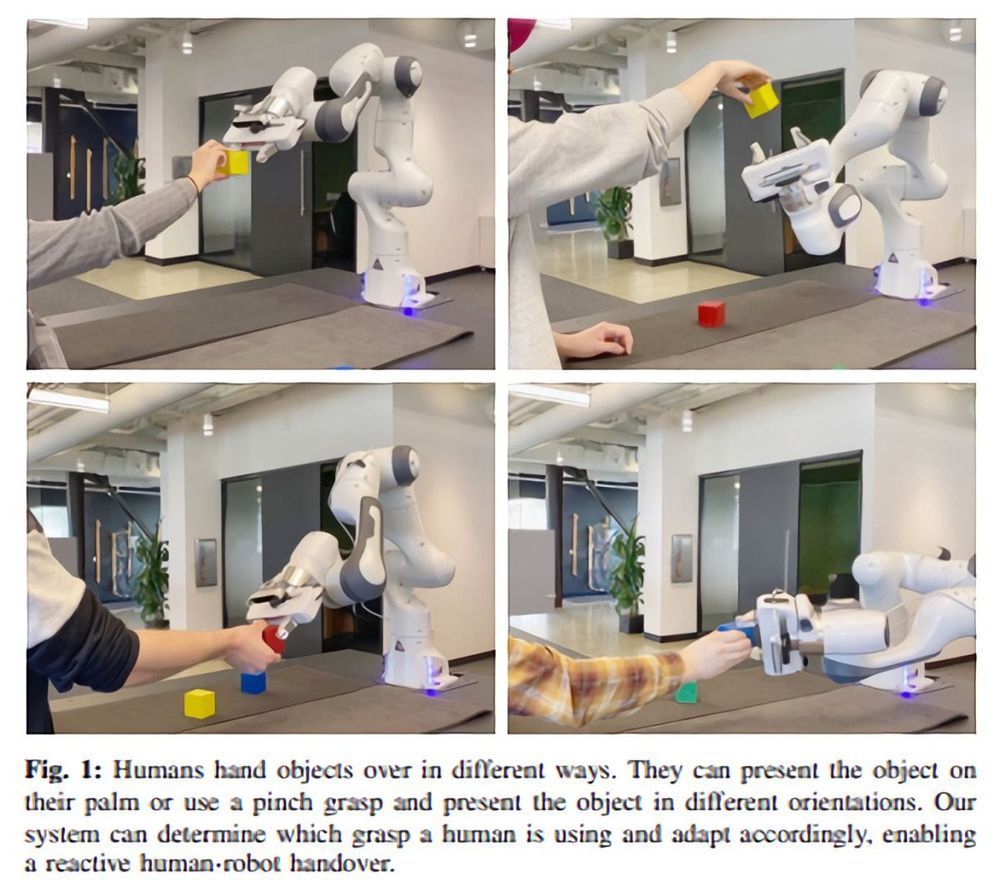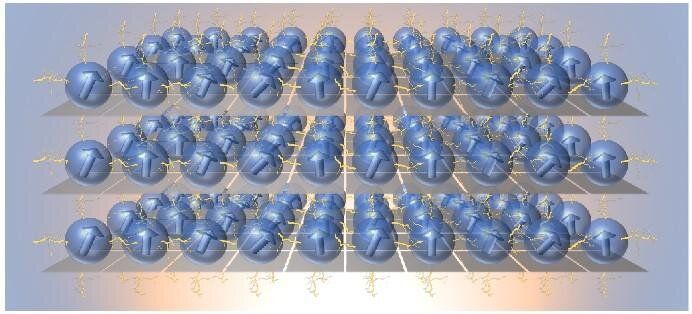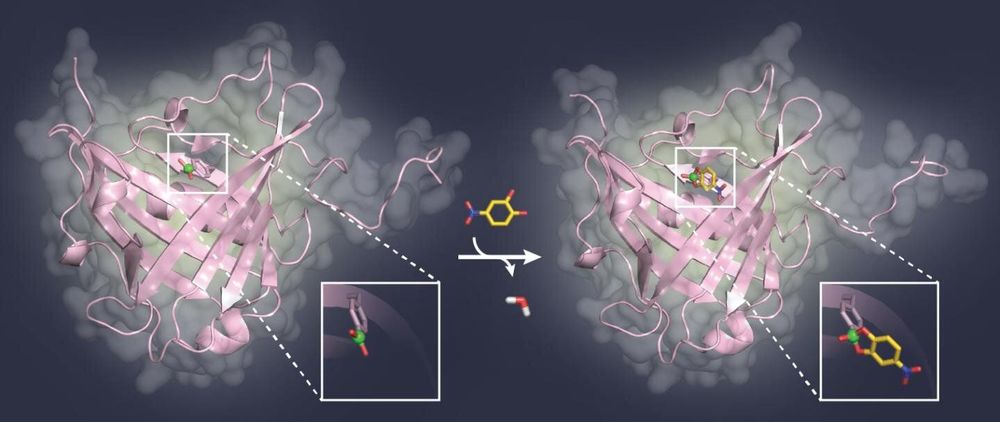Page 7714
Mar 17, 2020
Axions Would Solve Another Major Problem in Physics
Posted by Quinn Sena in category: particle physics
:ooooooooo.
In a new paper, physicists argue that hypothetical particles called axions could explain why the universe isn’t empty.
Mar 17, 2020
Nvidia researchers use AI to teach robots how to hand objects to humans
Posted by Genevieve Klien in category: robotics/AI
Nvidia researchers propose human-robot handovers in which the robot meets the human halfway, classifies their grasp, and takes the object from their hand.
One of the latest discoveries from the LHC takes the properties of photons beyond what your electrodynamics teacher will tell you in class.
Mar 17, 2020
Researchers set benchmark to determine achievement of quantum computing
Posted by Genevieve Klien in categories: chemistry, quantum physics, supercomputing
The race toward the first practical quantum computer is in full stride. Companies, countries, collaborators, and competitors worldwide are vying for quantum supremacy. Google says it’s already there. But what does that mean? How will the world know when it’s been achieved?
Using classical computers, computational scientists at PNNL have set a mark that a quantum system would need to surpass to establish quantum supremacy in the realm of chemistry.
That’s because the fastest classical computers available today are getting better and better at simulating what a quantum computer will eventually be expected to do. To prove itself in the real world, a quantum computer will need to be able to outdo what a fast supercomputer can do. And that’s where the PNNL-led team have set a benchmark for quantum computers to beat.
Mar 17, 2020
Coronavirus Vaccine Could Be Available in 90 Days
Posted by Nicholi Avery in categories: biotech/medical, innovation
While the CDC has a vaccination in clinical trials Israel claims they could have a COVID-19 vaccination available within 90 days:
Israeli Science and Technology Minister Ofir Akunis confirmed Thursday that scientists are close to developing the first vaccine against the COVID-19 novel coronavirus.
The vaccine could be ready within a few weeks and available in 90 days if all continues going according to plan, Akunis noted.
Continue reading “Coronavirus Vaccine Could Be Available in 90 Days” »
Mar 17, 2020
CanSino Biologics has a plan to take its life-saving treatments global
Posted by Omuterema Akhahenda in category: biotech/medical
A newly listed Chinese vaccine maker has set its sights on global expansion even as it looks to regain trust in its home market after a scandal last year raised questions about the industry’s quality standards…and guess what. They are currently doing trials on a coronavirus vaccine.
CanSino Biologics jumped 59 per cent in debut trading in Hong Kong on Thursday, reflecting the best first day trading gain in the city since 2017.
Mar 17, 2020
Recent research points the way toward a practical nutraceutical strategy for coping with RNA virus infections including influenza and coronavirus
Posted by Omuterema Akhahenda in categories: biotech/medical, life extension
 The authors draw attention to several randomized clinical studies in humans that have found that over the counter supplements such as n-acetylcysteine (NAC), which is used to treat acetaminophen poisoning and is also used as a mucus thinner to help reduce bronchitis exacerbations, and elderberry extracts, have evidence for shortening the duration of influenza by about two to four days and reducing the severity of the infection. The authors also note several nutraceuticals such as spirulina, beta-glucan, glucosamine, and NAC have either been found to reduce the severity of infection or to cut the rate of death in half in animals infected with influenza. Furthermore, one clinical study in humans testing spirulina noted significant reductions in viral load in those infected with HIV.
The authors draw attention to several randomized clinical studies in humans that have found that over the counter supplements such as n-acetylcysteine (NAC), which is used to treat acetaminophen poisoning and is also used as a mucus thinner to help reduce bronchitis exacerbations, and elderberry extracts, have evidence for shortening the duration of influenza by about two to four days and reducing the severity of the infection. The authors also note several nutraceuticals such as spirulina, beta-glucan, glucosamine, and NAC have either been found to reduce the severity of infection or to cut the rate of death in half in animals infected with influenza. Furthermore, one clinical study in humans testing spirulina noted significant reductions in viral load in those infected with HIV.
In a compelling article in Progress in Cardiovascular Diseases, published by Elsevier, Mark McCarty of the Catalytic Longevity Foundation, San Diego, CA, USA, and James DiNicolantonio, PharmD, a cardiovascular research scientist at Saint Luke’s Mid America Heart Institute, Kansas City, MO, USA, propose that certain nutraceuticals may help provide relief to people infected with encapsulated RNA viruses such as influenza and coronavirus.
In the United States, influenza infects around 30 million people every year causing around 30,000 deaths. While there are medications approved for the treatment of influenza, they typically are costly, have side effects, and are not very effective. Additionally, vaccinations against influenza may only be effective in around 50 percent of those vaccinated. Thus, there is a need for safer and effective alternatives in those infected with influenza.
Over the past few months, a novel RNA coronavirus, now called COVID-19, has broken out in China and has spread to over two dozen countries and infected more than 76,000 people causing more than 2,000 deaths. This novel coronavirus is much more lethal than the typical flu, with a current mortality rate of about 2.92 percent. In other words, around 1 in 33 people who are infected with this novel coronavirus will die. Whereas the annual flu has a mortality rate of just 0.05 to 0.1 percent. This means that around 1 in 1,000 to 2,000 people infected with the annual flu will die. In other words, COVID-19 is around 30 to 60 times more lethal than the typical annual flu.
Mar 17, 2020
Time crystals enter the real world of condensed matter
Posted by Quinn Sena in category: quantum physics
Can we realize non-trivial condensed-matter phases – such as topological insulating phases – in the time dimension? Topological insulators are condensed-matter systems that are insulators in their interior but, by virtue of the topological properties of the electronic structure, have conducting surface (edge) states. They are characterized by global topological invariants. An example of a topological invariant is the number of holes a surface has: a sphere has no holes while a torus has one. It is hard to change such a topological invariant because it is not possible to gradually introduce a hole in a sphere in order to change it to a torus – either there is a hole or there is no hole, but there is nothing like a fraction of a hole. Even the vacuum (empty space) has trivial topological invariants. In order to reconcile a change of this invariant at the interface between the vacuum and a topological insulator, there are surface (edge) states that close the gap between the energy bands of the insulator, thereby producing conducting behaviour.
Can a quantum swing behave like an electron in a topological insulator? Yes, for example if we ask the child to push with a combination of a resonant frequency ω and a sub-harmonic frequency ω /2 (Optica 5 1390, New J. Phys. 21 052003). Then the motion of the swing effectively creates a chain of lattice sites along the resonant orbit with staggered hopping amplitudes, and thus reproduces an example of a topological system, called the Su–Schrieffer–Heeger lattice. In order to observe the edge states, we need to create an “edge” in the motion of the swing and then check if there are quantum states that are localized close to it. How can we create an edge in time? We ask the child to jump on the swing from time to time, which introduces a barrier in the chain of lattice sites along the resonant orbit and consequently breaks the time-translational symmetry along the orbit, similar to how a surface breaks spatial-translational symmetry in an ordinary topological insulator.
Mar 17, 2020
Blocking sugar structures on viruses and tumor cells
Posted by Paul Battista in category: biotech/medical
During a viral infection, viruses enter the body and multiply in its cells. Viruses often specifically attach themselves to the sugar structures of the host cells, or present characteristic sugar structures on their surface themselves. Researchers at the Technical University of Munich (TUM) have developed a new type of protein reagent for identifying biological sugar structures, which may block the spread of an illness in the body if used for blocking the sugar structures of a cell or a pathogen.
The laboratory directed by Arne Skerra, Professor of Biological Chemistry, has its focus on designing artificial binding proteins for therapeutic applications. The laboratory’s current research findings are paving the way for the development of new types of binding proteins for biological sugar structures, which play a significant role in cancer as well as infectious diseases.

















